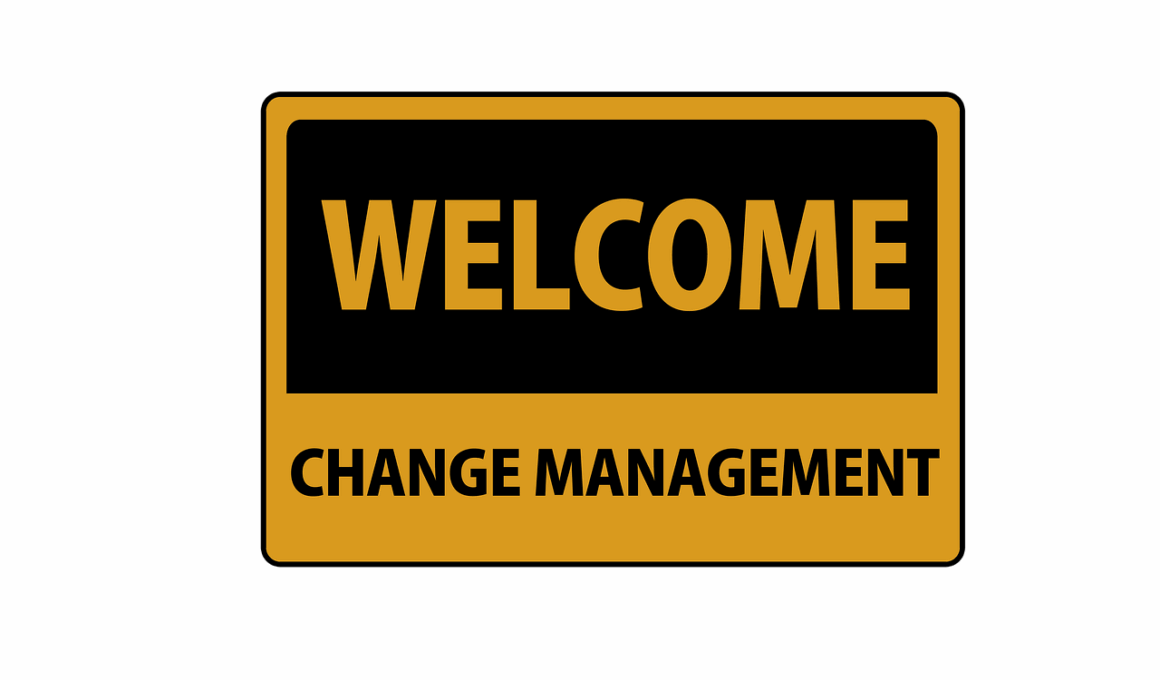Preparing Communication Plans for Credit Policy Changes
In the dynamic landscape of finance, effective communication is crucial, especially regarding credit policy changes. Addressing these modifications requires strategically crafted communication plans tailored to inform various stakeholders accurately. Borrowers must be educated about changes such as updated terms, new payment schedules, or altered interest rates. By informing them promptly and clearly, potential misunderstandings can be minimized. Additionally, creditors should be kept in the loop through consistent updates. This approach fosters transparency, which is vital for maintaining trust. Strategic communication enables stakeholders to navigate change positively and productively. Regular updates not only facilitate understanding but can also enhance borrower relationships. In developing these plans, the goals should be established upfront to ensure all team members align their efforts toward common objectives. Identifying the audience segments is equally important, as each may require different messaging. Keeping these factors in mind will ensure that the communication plan serves its purpose. Regular evaluation mechanisms should also be integrated to measure the effectiveness of the communication strategies deployed. Feedback can be gathered through surveys, focus groups, or direct stakeholder interactions, helping refine future approaches.
To ensure successful implementation of credit policy communication, it’s essential to utilize various communication channels effectively. Different channels serve distinct purposes and audiences, so choosing the right one is crucial. For instance, emails can be instrumental for direct communications with customers, allowing for detailed explanations of changes and offering support. Social media channels can amplify the messages to a broader audience, enhancing visibility and engagement. Using a blend of these channels can ensure the communication reaches all stakeholders effectively. Formal announcements through press releases can be deployed, primarily focused on broader economic impacts. Furthermore, having an interactive platform where stakeholders can ask questions or express concerns allows for a more engaging communication experience. Incorporating FAQs on websites or chatbots can also assist in addressing common queries swiftly. Another vital aspect is the timing of the communication. Communicating too early or too late may lead to confusion; hence timing should be well-planned. Lastly, evaluating the performance of each channel through analytics will provide insights into which were the most effective, facilitating better decisions in future communications. These strategies combined can create a robust framework for communicating credit policy changes.
Understanding Stakeholder Needs
Understanding stakeholder needs is foundational to developing effective communication plans for credit policy changes. Stakeholders typically include employees, borrowers, investors, and regulatory bodies, each with distinct requirements. Conducting stakeholder analysis provides insight into their expectations, sentiments, and concerns regarding the forthcoming changes. This analysis should be geared toward comprehending their level of understanding about the credit policies and any controversies that might arise. For employees, transparency regarding changes is vital—they should be armed with the necessary information to assist customers effectively. Borrowers, on the other hand, need clarity on how the changes impact their financial obligations. Active engagement through consultations or focus groups can assist in gathering valuable input from these stakeholders before finalizing communication strategies. Understanding how stakeholders prefer to receive information—whether through detailed newsletters, video presentations, or interactive webinars—can greatly influence how receptive they are to the changes. Customizing communication materials based on this insight contributes significantly to stakeholder satisfaction. Addressing the needs and preferences transparently will create a favorable environment for implementing credit policy changes, facilitating smoother transitions and enhanced cooperation from all parties involved.
Once stakeholder needs have been identified, crafting clear and concise messaging becomes paramount in the communication plans. The objective should be to present information transparently, avoiding jargon while addressing the credit policy changes. Summarizing the essential facts and subsequent actions required of stakeholders can significantly enhance understanding. It’s important to articulate why these changes are being made and their anticipated benefits to both the stakeholders and the organization. Emphasizing benefits can help garner more significant support for the changes. Utilizing bullet points or infographics in communications can help clarify complex information and make it easily digestible. Visual aids can simplify data and facilitate easier understanding among stakeholders who might not be well-versed in finance. Additionally, framing the messages to respond to common stakeholder concerns would mitigate anxiety that may arise from uncertain changes. Maintaining a positive tone while providing factual information can greatly influence stakeholders’ perceptions. Furthermore, consistency across all messaging is crucial; all channels should echo the same essential points. This holistic approach ensures that stakeholders feel informed and involved throughout the process, ultimately facilitating smoother transitions during times of change.
Implementation and Training
Implementing the communication plan requires well-defined roles and responsibilities to ensure effectiveness in conveying credit policy changes. All employees involved must be trained to understand the changes and how they affect their specific roles. Comprehensive training sessions should be organized, focusing on key aspects of the new policies and expected responses from stakeholders. This prepares employees to address queries and concerns with confidence. Training materials should be distributed ahead of time, giving staff the opportunity to familiarize themselves with updated policies. Utilizing scenario-based training can enrich employees’ understanding and readiness to interact with the stakeholders positively. A well-informed team can drastically improve the quality of communication and generate a sense of trust and reassurance among stakeholders. Furthermore, establishing a feedback loop during the training phase can help pinpoint any areas needing clarification or additional instruction. This process will ensure that the organization speaks with one voice regarding policy changes. Regular updates and refreshers post-implementation will maintain awareness and understanding of the ever-changing financial landscape. Overall, investing in employee training and support will substantially enhance the organization’s communication efforts.
Monitoring the outcomes of communication strategies after implementing the credit policy changes is essential for improving future communications. Gathering data through various feedback mechanisms will provide qualitative and quantitative insights into how effectively stakeholders received the information. Surveys, interviews, and focus groups can reveal whether stakeholders feel they received adequate knowledge and support throughout the process. Emphasizing data analysis ensures that adjustments can be made promptly, thereby enhancing stakeholder relationships over time. Analyzing this feedback helps contextualize any parts of the communication that didn’t translate well, allowing for revisions. Identifying patterns can provide insights into overall perceptions of the changes themselves. Regular stakeholders’ meetings can serve as an additional platform for addressing concerns. Moreover, using analytics tools to track the reach and engagement of different communication channels can guide the organization in refining its strategies. Knowing which channels facilitated effective communications can optimize future outreach. Establishing KPIs beforehand allows for systematic evaluations and accountability in communication plans. This commitment to continuous improvement ultimately fosters stronger collaboration and a deeper understanding of stakeholder sentiments across the organization.
Conclusion
In conclusion, preparing effective communication plans for credit policy changes involves strategic planning and execution. By understanding stakeholder needs, utilizing diverse channels, and training employees, organizations can successfully convey essential information regarding policy adjustments. Regularly monitoring feedback and results ensures that communication remains relevant and effective. Through this structured approach, transparency can be achieved and trust cultivated between stakeholders and institutions. Establishing clear communication expectations from the outset aligns everyone’s efforts, maximizing outreach potential. Focusing on simplicity and clarity allows the communication to resonate with various audiences, minimizing confusion. This proactive approach fosters a culture of openness and collaboration essential in today’s financial environment. As organizations continue to adapt to changes, maintaining effective communication will be invaluable to enduring loyalty and satisfaction among stakeholders. Organizations must commit to reviewing and refining their strategies based on feedback and outcomes regularly. By instilling a practice of systematic evaluations, organizations can holistically adapt their communication plans to better navigate the evolving landscape of credit management. With well-communicated changes, both organizations and stakeholders can work collaboratively toward shared goals.


